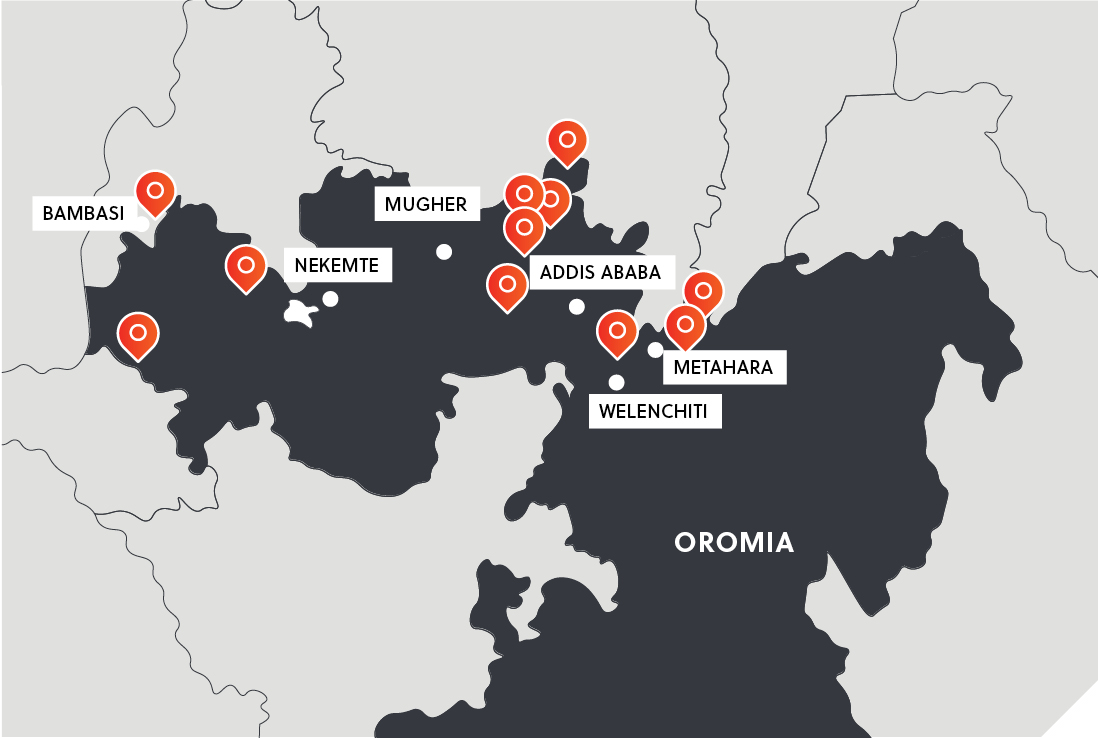Amid an increase in kidnappings in the Oromia Region driven by the Oromo Liberation Army (OLA), Richard Gardiner analyses the modus operandi of the OLA and who is most at risk.
Instability and volatility continues to plague Ethiopia’s largest region, Oromia. The region's volatile security environment is driven by an ongoing conflict between government forces, the Oromo Liberation Army (OLA), and Amhara militias. While violent clashes between the opposing sides are a common occurrence across Oromia, employees of foreign and domestic companies, government officials, and local civilians now face a growing kidnapping threat.
The Oromo Liberation Army
The vast majority of abductions in Oromia in recent years have been carried out by the OLA. Until 2018, the OLA operated as the armed wing of the Oromo Liberation Front (OLF), who had been fighting a secessionist war against the Ethiopian military for an independent Oromia State. Following a peace agreement in 2018, the OLF established itself as legitimate opposition group and ended its conflict with the government and military. However, the OLA broke away from the OLF and is now recognised as an entrenched militant group in the Oromia region that regularly stages attacks against government targets and ethnic Amhara militias. Increasingly, the OLA has been engaging in kidnapping activity, with 20 reported incidents claimed by the group in Oromia in 2022, compared to five in 2021.
Who is at risk?
The motive behind the OLA’s kidnapping pursuits is two-fold. Firstly, the kidnapping of government officials and security personnel serves to raise awareness around its secessionist ambitions and grievances against the government. Secondly, kidnap ransoms have helped to raise financial resources to fund the OLA’s operations, considering the group lacks significant external resources and has had to rely on self-funding to sustain its activities. This has elevated the threat of the group targeting foreign and domestic companies, which are perceived as wealthy targets with the ability to pay higher ransoms. The situation poses a significant threat to the commercial environment in Oromia, and there is precedent for multiple sectors, including heavy industries such as cement production and mining, as well as long-distance road transportation, to be impacted by OLA kidnappings.
OLA kidnappings in Oromia Region October 2022-March 2023

The tricks of the trade
The OLA has opportunistically exploited Oromia’s conflict-prone and unstable security environment to advance its kidnapping activity. The government’s limited reach in many parts of Oromia, and the OLA’s willingness to use violence, have led to a brutally efficient modus operandi. Security forces rarely interfere with the OLA's kidnapping activity as this could result in the victims being killed. The OLA has further shown a willingness to harm or kill victims if their employers or family fail to meet ransom demands. However, abductees are typically released unharmed if ransom demands are met. Ransoms range from USD 3,000 to USD 20,000 and are usually determined based on the victim’s background, such as nationality, the business sector they operate in, or the size of the company they work for.
Risks of road travel
Oromia’s roadways, such as the A1 between Welenchiti and Metahara in the East Shewa Zone, have become hotspots for OLA kidnappings, making long-distance truck transportation between Ethiopia and Djibouti an increasingly risky business. The OLA is further responsible for recently reported abductions of foreign mineworkers and security personnel along the B40 roadway, between Nekemte and Bambasi in western Oromia.
The situation poses a significant threat to the commercial environment in Oromia, and there is precedent for multiple sectors, including heavy industries such as cement production and mining, as well as long-distance road transportation, to be impacted by OLA kidnappings.ˮ
Looking ahead
To improve the region’s security environment, the President of Oromia, Shimellis Abdissa, has called on the government and the OLA to enter peace talks. The OLA has shown a willingness to engage in such negotiations, however, official consultations between the two sides have yet to transpire, indicating that an improvement in Oromia’s security environment is unlikely in the coming months . With the Ethiopian military’s inability to credibly contain the OLA, the upward trend in abductions will likely continue for the foreseeable future. Companies operating in the area are advised to keep abreast of OLA developments and implement adequate security measures to protect their personnel and assets and up-to-date kidnapping response procedures in the event of a personnel kidnapping. The consequence of being ill-prepared could result in significant financial losses or even the loss of human life.




